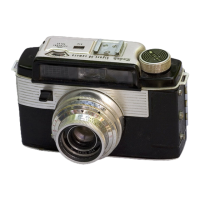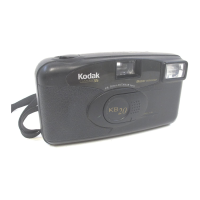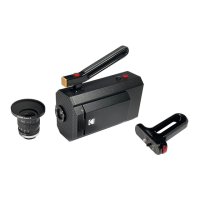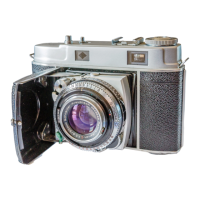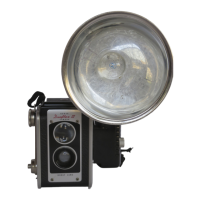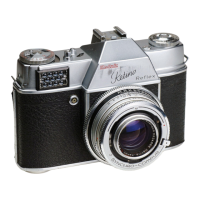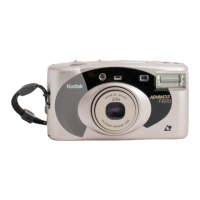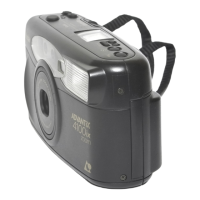CAMERA
SPEEDS
FOR
correct exposure,
be
sure
to change the diaphragm when you change the
camera speed. For
each
full
step increase in camera speed, increase the dia-
phragm opening
one
stop.
The
dot
between speeds 16 and 32 is speed
24.
It
is
not
marked
as
it
is
not
a full step.
When
motion
pictures are
taken
and projected
at
the
same speed.
the
action appears normal.
The
standard
speed
of
taking
and projecting
home
movies is 16 frames per second.
By means
of
the
variable speed fea-
ture on the Cine-
Kodak
Special,
the
action
of
the
original subject can be
slowed
down
for analysis
or
speeded
up for comic effects. Camera speed
is
controlled
by
the
SPEED
DIAL
shown
in Figure
29.
By
setting
the
dial
at
64, for instance,
64
individual
frames are
taken
every second,
or
four
times
as
many
as
normally.
F'
Suppose
it
takes one second for a
Ig.29
ball
to
drop from a certain
height.
If
photographed
at
speed
64,
4 times
the
normal number
of
frames
will
be exposed. Projected
at
normal
speed,
the
64 frames require four seconds. In
short,
the
ball
wi
ll
drop
in
four seconds instead
of
one,
and
the
effect is slow motion.
Therefore,
the
camera is speeded
up
to
make
the
action slow,' slowed
down
to
make
the
action
fast.
Another
use
of
the
speed control is
to
prolong
the
exposure
so
that
pictures can be made under
light
conditions necessitating a
diaphragm
the
next
size larger
than
the
largest
diaphragm
opening.
With
the
f.1.9lens
and speed
8,
pictures can be made indoors even on dull days,
provided
the
subject is near a
window.
When slow motion pictures are desired, use speed
32
or
64, depending
upon
the
amount
you
want
the
action slowed down. Use speed 8 for
comic rapid action pictures
or
for prolonging
the
exposure
when
the
light
is unfavorable.
35
